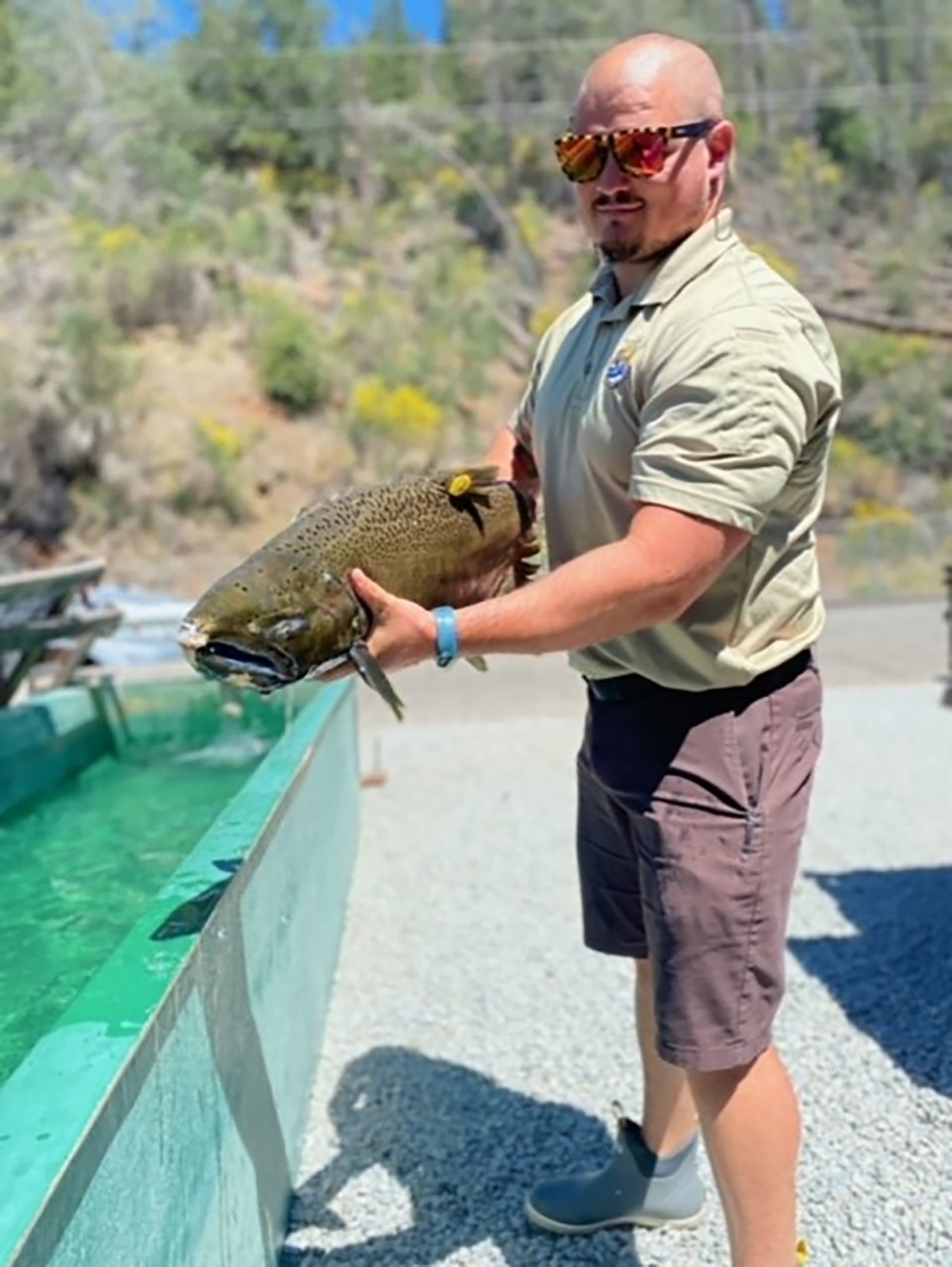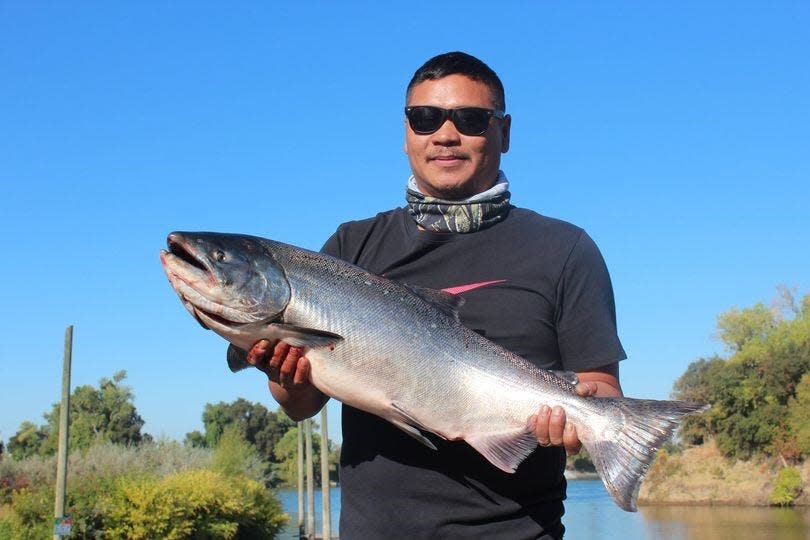As salmon fisheries collapse, CDFW will hold salmon information webinar

SACRAMENTO - As salmon runs on the Sacramento and Klamath River systems continue to plummet, the California Department of Fish and Wildlife will hold its annual Salmon Information Meeting via webinar next week.
The session is schedule 10 a.m. to 4 p.m. next Wednesday, March 1.
This meeting is one of the most important meetings of the year for anglers to attend. It will feature the outlook for this year’s sport and commercial ocean salmon fisheries, in addition to a review of last year’s salmon fisheries and spawning escapement, according to the CDFW.
The meeting will unveil the ocean abundance estimates for Sacramento River and Klamath River fall-run Chinook salmon that ocean commercial, river recreational and tribal fisheries are based upon.
Following the informational presentations, stakeholders will be able to offer testimony and recommendations for the 2023 fishing season regulations in advance of the upcoming Pacific Fishery Management Council (PFMC) meetings in March and April.
Expect to hear heated comments from anglers who reported abysmal fishing in the Central Valley rivers in 2022.
The PFMC last year greatly overestimated the ocean abundance of Sacramento River fall-run Chinook salmon, the driver of West Coast salmon fisheries.

Under the 2022 regulations, the projected spawning escapement in the Sacramento River Basin was 198,694 hatchery and natural area fall-run Chinook adults. However, only 61,850 hatchery and natural area adult spawners actually returned to the Sacramento River Basin in 2022, according to the PFMC’s Review of 2022 Ocean Salmon Fisheries.
This was the third lowest return of salmon to the Sacramento watershed in the last 30 years - and is only half of the goal of 122,000 adults set by the council.
Fall-run Chinook (SRFC) returns to Sacramento River hatcheries in 2022 totaled 29,138 adults and 3,926 jacks, and escapement to natural areas was 32,712 adults and 3,070 jacks.
These fish are considered to have been subject to overfishing if the estimated exploitation rate exceeds their maximum fishing mortality threshold (MFMT) of 0.78. An estimate of the 2022 SRFC exploitation rate is not yet available.
The spawning escapement of winter-run Chinook salmon, an endangered species under both the State and Federal Endangered Species Acts, to the Sacramento River was also dismal. Spawner escapement of these endangered fish in 2022 was estimated to be only 5,561 adults and 477 jacks. By contrast, 117,000 winter Chinook returned to the Sacramento River in 1969.
Escapement of spring-run Chinook to the Sacramento River system in 2022 totaled 6,245 fish (jacks and adults), with an estimated return of 4,473 to upper Sacramento River tributaries and the remaining 1,772 fish returning to the Feather River Hatchery.
Because of their low population levels, anglers have been prohibited from fishing for winter and spring-run Chinooks for decades.
Likewise, the estimate for returning Klamath River fall-run Chinooks, which impacts recreational and commercial fishing in the Klamath Management Zone of the Northern California and Southern Oregon Coast and beyond, was inaccurate. The 2022 preliminary postseason river run size estimate for KRFC was only 46,690 adults compared to the preseason-predicted ocean escapement (river run size) of 66,759 adults.
This contrasts with a total run of 295,322 ten years before in the fall of 2022.
The escapement to natural spawning areas in 2022 was 22,050 adults, 58 percent of the preseason prediction of 38,180 adults. The estimated hatchery return was 13,235 adults. Jack returns to the Klamath Basin totaled 7,581 including 4,151 that escaped to natural spawning areas.
Anglers are mobilizing for a large turnout at the meeting – and contend their constant requests for better state and federal management of Central Valley rivers have gone unheard.
“We need all anadromous salmon anglers on (the) March 1 call,” said James Stone, president of the NorCal Guides and Sportsmen’s Association (NCGASA) on the organization's website. “Most of the public comment will transpire at the end of the meeting from 2 to 4 pm, so if you’re concerned about inland fisheries on the Klamath or on the Sacramento Delta system or in the ocean, whether you’re commercial or recreational, make sure you show up and voice your opinion of what you would like to see.”
The meeting follows Gov. Gavin Newsom’s executive order on Feb. 14 to hold back water in Central Valley reservoirs that is needed badly by salmon and other fish.
“Californians saw a very low number of salmon in last year's returns following years of water management clearly aimed at aiding a handful of wealthy factory farm operators at the expense of the rest of us,” said John McManus, president of the Golden State Salmon Association (GSSA), in a statement released by his organization. “There's a good chance the tens of thousands of Californians who work in the salmon fishery and related businesses will be out of work this year if the decision is made to close the fishery.”
“We've got 205 percent of the normal snowpack in the Sierras, most of which will flow into the state's reservoirs, so why is Gavin Newsom telling his water managers to make things worse for every family in California that depends on salmon to make a living?” he asked.
The 2023 Salmon Information Meeting marks the beginning of a two-month long public process used to develop annual sport and commercial ocean salmon fishing regulations. “The process involves collaborative negotiations between West Coast states, federal agencies, tribal co-managers, and stakeholders interested in salmon fishery management and conservation,” according to the CDFW.
Public input will help California representatives develop a range of recommended season alternatives at the March 5-10 PFMC meeting in Seattle. Final season recommendations will be adopted at the PFMC’s April 1-7 meeting in Foster City, Calif.
Salmon Information Meeting details, informational materials and instructions for attendance will be published in advance of the event on CDFW’s Ocean Salmon webpage: https://wildlife.ca.gov.
This article originally appeared on The Record: CA salmon webinar announced as fisheries in Sacramento, Klamath drop

